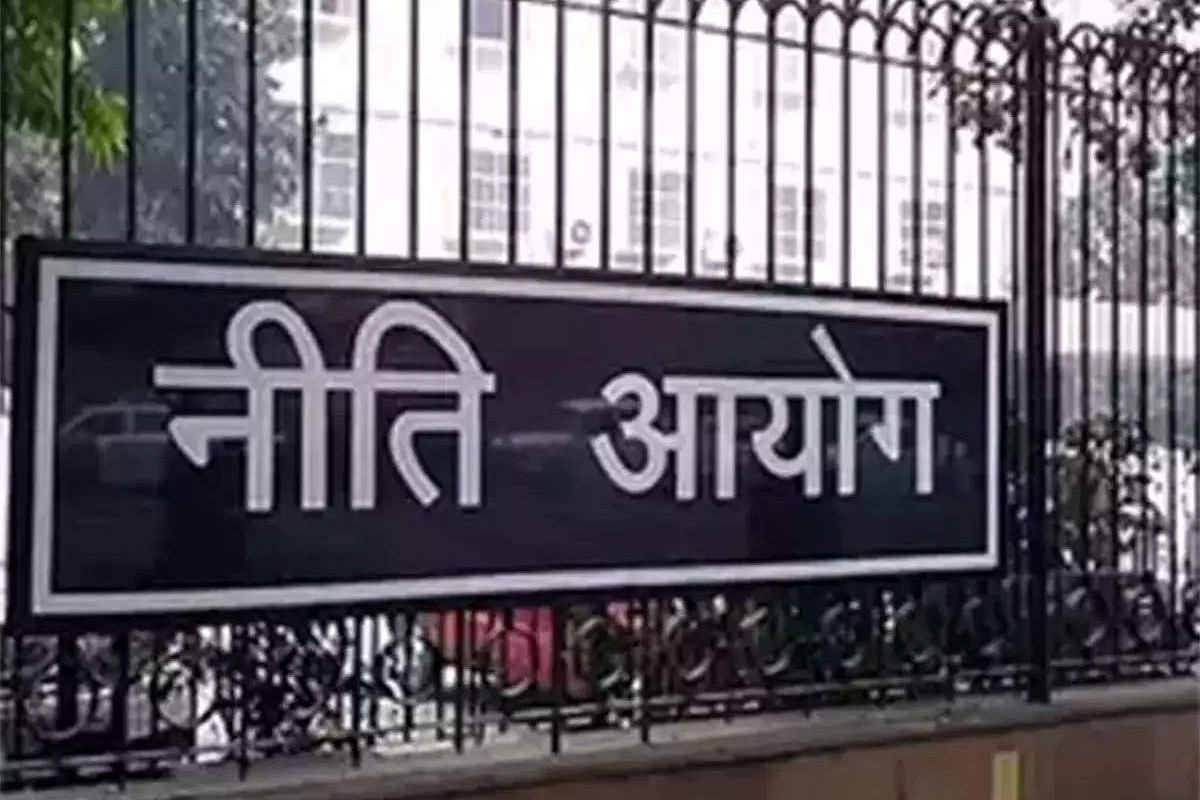News Brief
Why Is NITI Aayog Proposing A Digital Bank?
- To help India’s small and medium enterprises access credit at a low cost from the organised money markets, NITI Aayog has come out with a paper proposing the establishment of Digital Banks (DB).
- Full-stack digital banks, with their low operational costs, are expected to reach customer segments that traditional banks find unviable to service.

NITI Aayog.
The NITI Aayog recently came out with a paper proposing the establishment of Digital Banks (DB) to fill in credit and banking service gaps.
Why do We Need Digital Banks?
According to NITI Aayog, a great degree of innovation has taken place in the financial space with the advent of fin-tech companies, specialised banks, India Stack, Unified Payments Interface and other initiatives.
However, traditional incumbent banks have only grown larger, and have still remained completely entrenched and undisrupted in the system. Due to the inertia in the banking space, a large segment of small and medium enterprises have still remained under-banked. As a consequence, they are exposed to informal money markets where rates of interest are usurious.
In addition, entities that take up loans from informal lenders often have a mix of formal and informal debt, making it unviable for banks to conduct due diligence given the small ticket size of the loans. Non-banking financial companies (NBFCs) have a high credit cost compared to banks and face regulatory constraints, making it difficult for them to lend to small entities as well.
Receivables discounting platforms, though promising, face extremely strict guidelines that drive buyers away, resulting in a lack of credit for small and medium companies.
Hence, NITI Aayog has come up with the idea of a Digital Bank. These banks would have a banking license, allowing them to partake in all activities such as deposits, lending, banking services etc. The banking license would also give it access to low-cost capital.
Unlike most neo-banks that offer scaled down banking services and partner up with traditional banking partners to lend, a digital bank would lend on its own book. These neo-banks operating on a partnership model are the consequence of a regulatory vacuum in the digital banking space.
Once the Reserve Bank of India begins issuing “full-stack” licenses, neo-banks would begin lending with their own money. The proposed Digital Banks are expected to be standalone entities and not the digital arms of traditional banks. These factors would separate the proposed digital banks from the current internet banking services.
WeBank has a per account operation cost of $0.5. In contrast, the same figure could be 10 to 20 times higher in traditional banks. In addition, the digital presence allows these banks to cater to customers across areas without having to invest money into physical assets.
Steps to Establishing Digital Banks
According to the report, the implementation could take place in three stages – the introduction of a restricted Digital business bank license, followed by slow relaxation of rules based on the performance of the licensee. If the license performs well and meets the required criteria, it could be allowed to bloom into a full-fledged digital bank. If it does not meet the required criteria, it would be given a window to exit the business.
“If the metrics agreed on ex ante are not met over a defined period, the licensee may be given a window to unwind the liabilities created including any term deposits, assign assets created to an identified buyer and exit the sandbox, per the process laid down in RBI’s regulatory sandbox framework,” said the paper.
As an estimate, a digital bank could be required to bring in around Rs 20 crore of paid up capital in its restricted form. However, as it expands, it is likely that the paid-up capital requirement would increase to around Rs 200 crore.
In addition, these banks, like traditional banks, would have full access to infrastructure enablers such as Aadhar Know-Your-Customer, UPI, Insurance Deposit and others. NITI Aagyog has called for more liberal regulations for loans, banking services, fixed deposit, factoring, distribution and other factors. Payments banks have seen a lower adoption due to high number of restrictions on various aspects.
“Such limits can restrict micro and small businesses from utilising these accounts during seasonal cash flow surges (eg, Diwali) or use these accounts as designated accounts for loan disbursals. After the progression to fully licensed stage, it can continue to offer these and other products and services at scale and without restrictions,” the paper said.
The initiative is aimed at helping India’s small and medium enterprises access credit at a low cost from the organised money markets. Full-stack digital banks, with their low operational costs, are expected to reach customer segments that traditional banks find unviable to service.
Introducing ElectionsHQ + 50 Ground Reports Project
The 2024 elections might seem easy to guess, but there are some important questions that shouldn't be missed.
Do freebies still sway voters? Do people prioritise infrastructure when voting? How will Punjab vote?
The answers to these questions provide great insights into where we, as a country, are headed in the years to come.
Swarajya is starting a project with an aim to do 50 solid ground stories and a smart commentary service on WhatsApp, a one-of-a-kind. We'd love your support during this election season.
Click below to contribute.
Latest